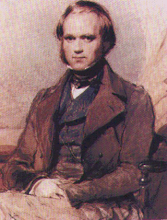
Nicholas Steno, born in 1638, was a renaissance era scholar, whose experience in comparative anatomy provided some of the earliest evidence recognizing fossils as the preserved remains of animals, which he famously demonstrated by comparing modern shark teeth to fossils shark teeth.
Steno is also credited with enunciating basic principles of geology that help determine the relative order of geological events that led to the development of a geological time scale.
Steno reasoned that sedimentary rock layers were formed when particles in a fluid such as water fell to the bottom, resulting in horizontal layers. Thus Steno's principle of original horizontality states that these rock layers form in the horizontal position.
Steno realized that tilted or folded rock layers, like the ones shown in the illustration here, meant that the layers were disturbed after they were deposited. It may seem obvious to us today, but this insight represented a huge step toward understanding 4.6 billion years of earth history.
Image and more information available here.







